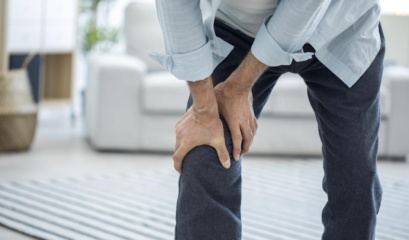We had a gentleman in our Revesby clinic last week who asked us this…
“Is walking bad for my knees?”
He said he started to experience knee pain a few years ago when walking down the stairs and thought nothing of it.
He thought it was just something that would “wear off” with time.
But when he noticed the pain in his knees every time he went down the stairs, or walked up and down hills with his dog, he thought he better do something about it.
He went to his doctor, who told him to rest and take painkillers to ease the pain.
But, the word “rest” can be confusing…
What does “rest” even mean?
Does it mean you have to sit inside on the sofa all day when you’ve got things to do?
Does it mean no walking until your knee feels better?
And then when it does, how much walking is too much?
Does it mean avoiding exercise altogether?
Being told to rest and take painkillers is one of the most common things we hear when people are given “knee pain” advice.
The thing is, this cocktail mix of rest and taking tablets will do absolutely nothing to help you get back to being active…
It will 100% not get to the root cause of what brought on your knee pain in the first place so you can start to get back to living life without it.
Instead of rest, you should actually move!
(So long as it’s not a serious knee injury that’s caused damage).
I know if you’re one of the many people suffering with knee pain, you might be worried to use your knees and might want to take some time off to let your knees heal…
But walking is a safe, low-impact activity, that can actually help get you on the road to recovery.
When we don’t move our joints, they become stiff and immobile, which can cause inflammation – which actually makes joints like our knees even MORE painful!
If you’ve suffered a serious knee injury that’s caused damage, then that’s another story altogether…
But if you’re experiencing daily, annoying knee pain, then there’s some simple things you can do to keep moving, and walk safely, without making it worse.
Something as simple as changing your shoes and gentle bodyweight exercises anyone can do from the comfort of their own home, are just two examples.
When it comes to shoes, have you thought about getting a good pair of walking shoes?
They have good cushioning and shock absorption, so if your shoes are old and have lost their cushioning, you should replace them.
If you have low arches (when your feet roll inwards as you walk), a shoe with enhanced support, or a pair of orthotic inserts, will help relieve the stress on your knees.
Always start your walk with a slow, gradual warm-up and try to get out for a walk during a time in the day when your knee pain doesn’t feel bad.
Begin with short walks and build up time and distance gradually, rather than going straight into a 30 minute walk.
Doing strengthening exercises for the legs can help keep your knees in good walking condition.
Bodyweight exercises like squats, calf raises and glute bridges are good choices.
Flexibility exercises for the leg muscles help maintain movement and range of motion in your joints and reduce the amount of strain placed on them.
Always warm up before stretching and performing any of these exercises and don’t over-do it.
It’s important you never feel pain when you do these movements.
Knees are made to bend.
They’re designed to help us walk, kneel down, bend to help us grab objects, walk up and down stairs – not to stay still and rest all day!
(Which is what a lot of people do!)
Start slow…
With gentle walking and strengthening exercises, and build up slowly so you can do more.
It might feel like knee pain is something you’ll have to learn to live with and might not be able to be as active as you once were – that’s not always the case.
Don’t just accept rest and taking painkillers as your only solution…
There’s a way to get back to living a life you enjoy.









